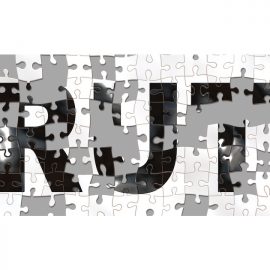

This article is an excerpt from the Shortform book guide to "Contagious" by Jonah Berger. Shortform has the world's best summaries and analyses of books you should be reading.
Like this article? Sign up for a free trial here .
What is social currency? How can this concept be applied to your marketing strategy?
Social currency refers to the influence or value you bring to the people around you. If talking about a product or service improves people’s social currency, it will dramatically improve engagement, word of mouth, and sales. This is because people will want to talk about and share your product if it will make them seem more interesting to others.
Keep reading to find out more about social currency and how you can use it in your marketing strategy.
What Is Social Currency?
So what is social currency? The theory of social currency is based on the idea that everything you talk about affects how people see you and impacts your level of social influence. For example, if you only talk about boring things, people will think you’re boring. They won’t want to talk to you anymore, meaning your social influence will decrease. However, if you talk about interesting, witty, or unusual things, people will think you’re fun to be around. They’ll want to spend time with you, and your social influence will increase.
Because what people say has such a big impact on their public image, they’re inclined to choose their topics of conversation carefully. They’re only willing to talk about things that they think will add to their social currency, not deplete it. For this reason, if you want information about your product or idea to disseminate through word of mouth, make sure that discussing it gives people social currency rather than taking it away.
You can make your product or idea a source of social currency by implementing three principles:
- Make it remarkable.
- Apply game mechanics.
- Use scarcity and exclusivity.
1) Making Things Remarkable
The first way to make your product or idea a source of social currency is to make it remarkable—somehow interesting or innovative enough to get people talking. Berger’s research has shown that people love talking about remarkable things—for example, improbable or interesting facts and innovative products—because doing so makes them seem remarkable.
Berger’s research has also demonstrated that people tend to exaggerate the remarkability of what they’re talking about just to make themselves seem even more remarkable. For example, someone might frame an innovative product that helps them to chop a vegetable in less than ten seconds as a five-second chopping sensation. Therefore, if you can get people talking about your remarkable product, they’ll probably make it seem even better than it actually is. This will only help in your mission to generate word of mouth.
How Can You Make Your Product Seem Remarkable?
You can make a product or idea seem remarkable by using your marketing materials to emphasize the thing that makes it interesting or notable. Clearly tell the consumer what makes your product so special. For instance, can your product do something that was previously thought to be impossible? Does it break and improve upon an expected or accepted pattern? If so, make this a key element of your marketing strategy.
Take the example of Blendtec blenders. These products seem ordinary enough. They’re just blenders, right? Well, not quite. Blendtec products became remarkable when it emerged they were strong enough to blend items as tough as golf balls. No other blender had done that before.
Another example of this principle is JetBlue, a popular budget airline. Most low-cost airlines have small seats, very few snacks, and no in-flight entertainment. JetBlue flights are remarkable because they break all of these conventions—so people talk about and recommend them.
A more unusual way to make your product remarkable is to add an element of mystery or controversy to its marketing. Give it a mysterious provenance, or make it challenge social convention somehow. People love talking about things that raise questions or trigger outrage.
A famous example of this is the marketing around the movie The Blair Witch Project. The movie was initially marketed as “found footage”—the real recordings of three filmmakers who’d gone missing, possibly at the hands of a witch. People constantly discussed and questioned whether the footage was real or not, contributing to the film’s popularity.
2) Apply Game Mechanics
Game mechanics are the parts of a game that measure accomplishment—for example, points systems and leaderboards. When people meet these mechanics’ requirements and “win” the game, they get the sense that they’ve achieved something.
This achievement becomes a form of social currency: something that people can brag about to impress others. When people brag, they also spread word of mouth about the product or service that gave them their sense of achievement. For instance, they mention the name of the game that they won, or tell people how fun the game is.
To apply game mechanics to your product or service and generate word of mouth, find a way to replicate the sense of achievement that people feel when they win a game. One option is to introduce a reward system in which customers unlock benefits if they use your product or service enough times. For example, airlines have “gamified” air travel by introducing frequent flier reward programs. The more a person flies with the company, the more “air miles” they collect, and the higher up the rewards hierarchy they advance.
Earning a reward is an achievement that your customers will boast about—and they’ll mention your company when they do so.
3) Use Scarcity and Exclusivity
Making a product or service scarce and exclusive gives social currency to the people who do manage to get hold of it. These customers seem “special” because they’ve accessed something that’s out of reach to a lot of people. When bragging about their “special” status, these customers will spread word of mouth about the scarce or exclusive thing they’ve bought.
To add the perception of scarcity to your product, give the impression that it’ll be difficult to get hold of. For example, you could tell customers that you expect the product to sell out quickly. Meanwhile, to add exclusivity to your product or service, create the perception that only a select few people can access it. For instance, you could make access to your product or service “members only.”
An example of a business that thrived after adding scarcity and exclusivity to its products is Rue La La, a website that sells discounted designer items. When the website was founded in 2008, its CEO decided to only sell goods during “flash sales” that lasted for a day or two. This created an impression of scarcity. To access the sales, customers had to be invited by an existing user of the site. This generated a sense of exclusivity.
Because of this scarcity and exclusivity, gaining access to Rue La La’s products became a form of social currency. Its members bragged about their use of the site, spreading the word about its existence in the process. The result was Rue La La quickly increasing its customer base.
Try This Exercise to Generate Social Currency
Learn how to make a product a source of social currency:
- Think of a time you tried to tell someone about a product—either a product you’re marketing yourself, or a product you’ve used—but they seemed uninterested in what you were saying. What was the product? Why do you think your discussion of it fell flat?
- In your eyes, what makes this product remarkable? (For instance, does it do something you previously thought was impossible? Does it modify a tried and tested formula? Is it in some way mysterious or controversial?)
- Does the product have any other attributes that could give it social currency? (For example, is it part of a reward system that leverages game mechanics? Is it somehow scarce or exclusive?)
- Now that you’ve considered the product’s remarkability and other interesting attributes, do you think you’d gain social currency if you talked about it again? Why or why not?

———End of Preview———
Like what you just read? Read the rest of the world's best book summary and analysis of Jonah Berger's "Contagious" at Shortform .
Here's what you'll find in our full Contagious summary :
- Why some new products and ideas gain widespread popularity while others fail
- The six principles to making your product or idea contagious
- The importance of word of mouth in marketing






